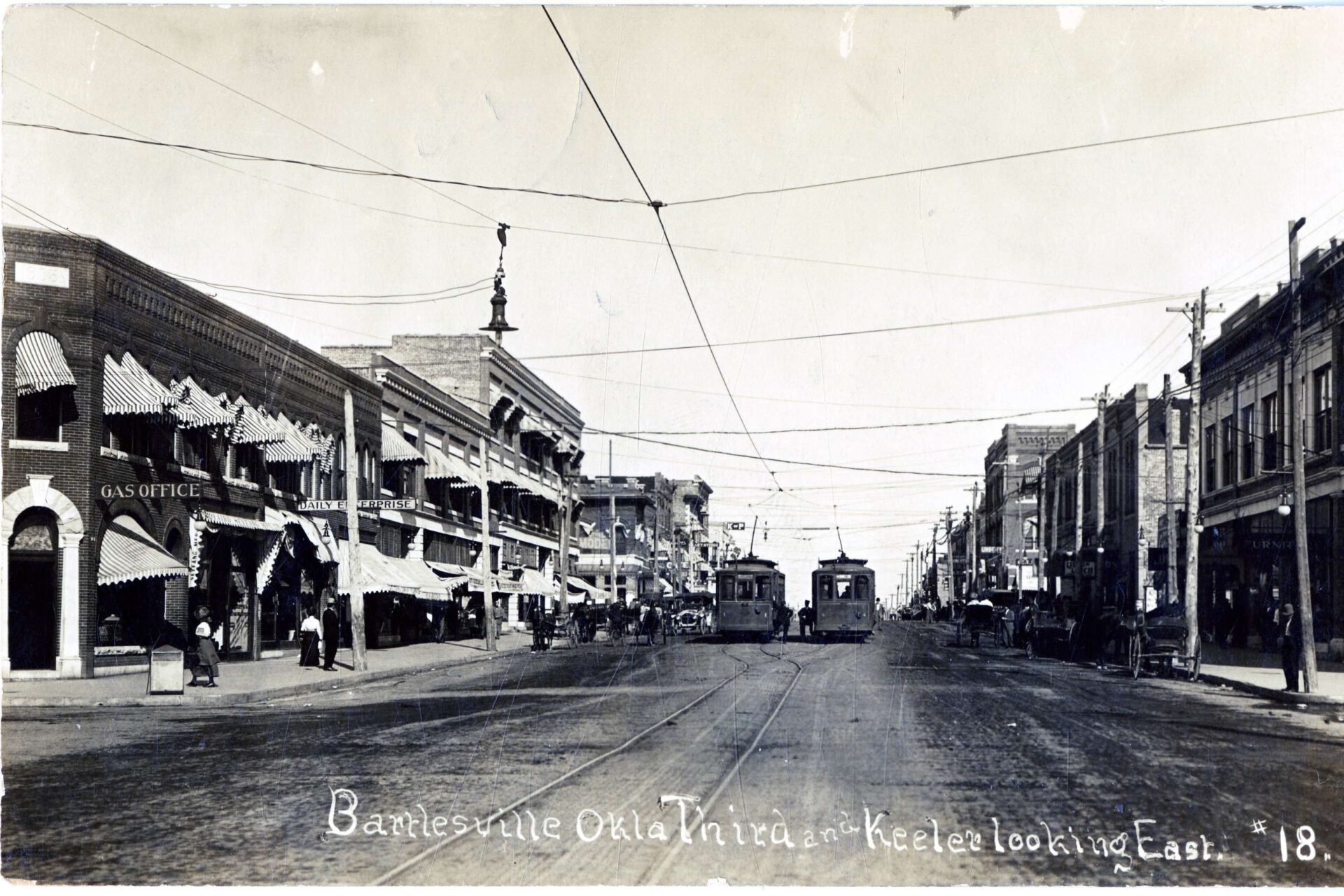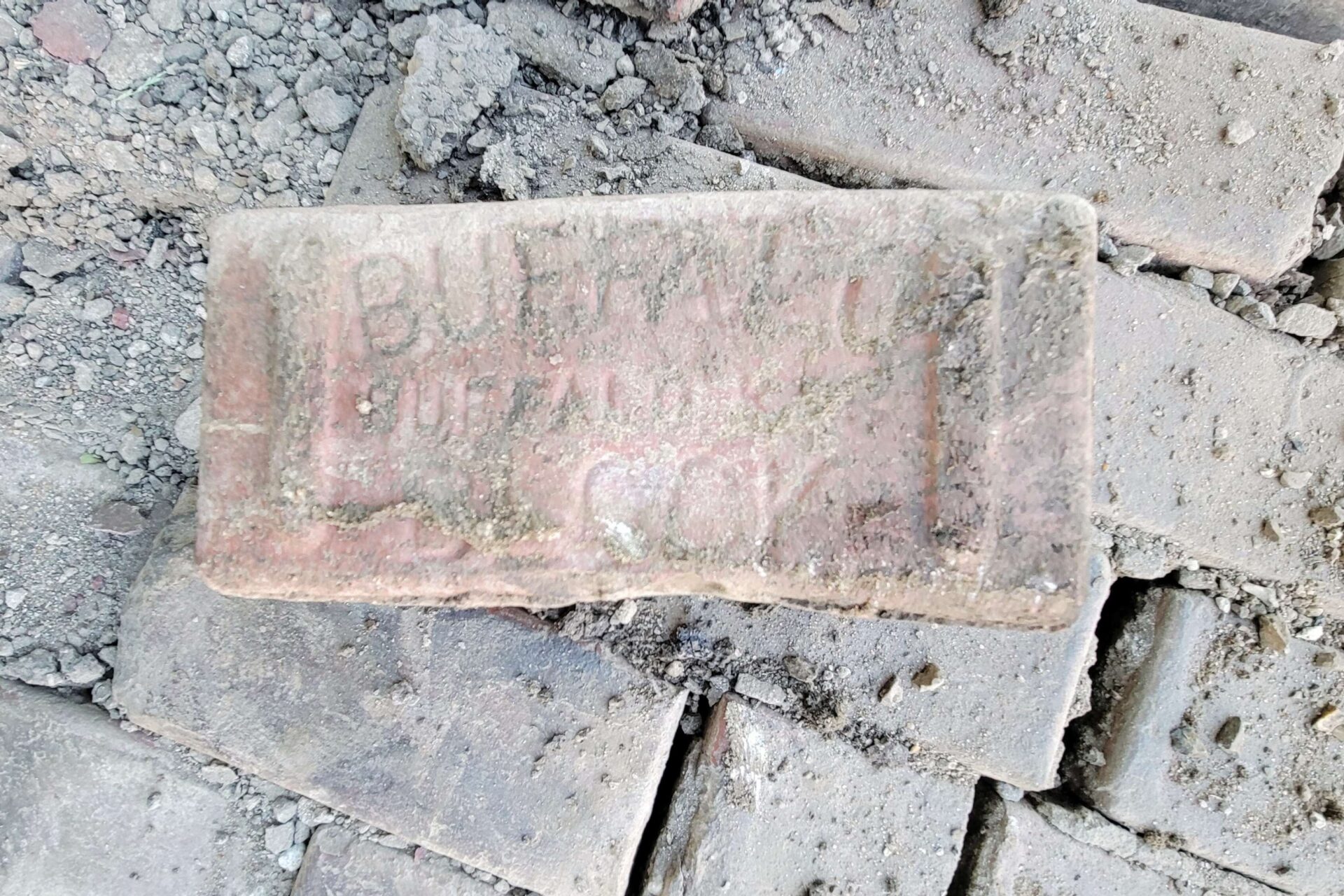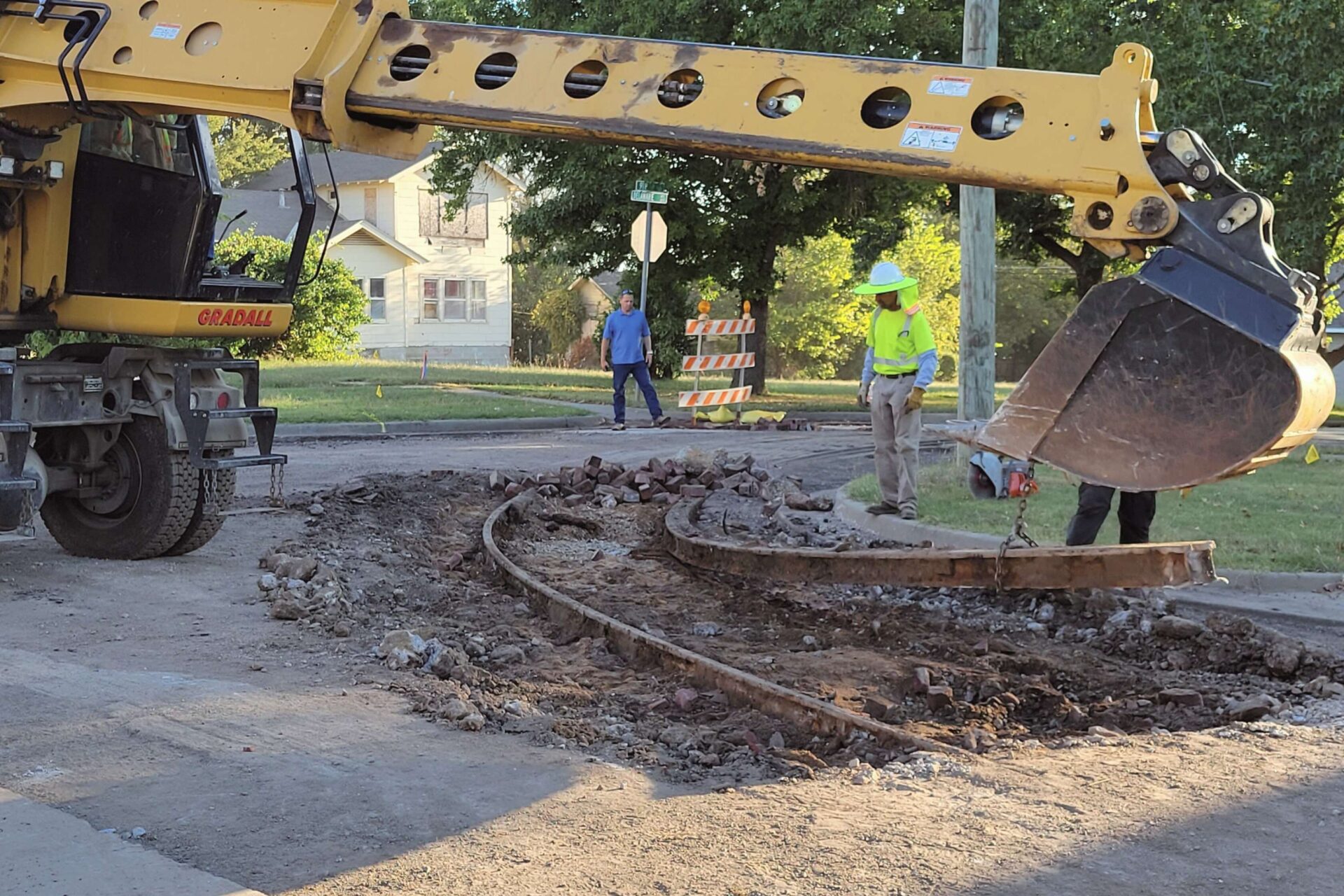

City of Bartlesville Project Engineer Steve Roper first recognized that the planned mill and overlay of Delaware Avenue from Fifth to Hillcrest (approved by voters in the 2020 GO bond package) would likely uncover a portion of the railway at the Ninth Street intersection. Realizing the significance to Bartlesville history buffs, he reached out to Debbie Neece, Collections Manager at the Bartlesville Area History Museum, who was thrilled with the chance to preserve a portion of the railway.
“During World War II, Dewey rail tracks were pulled for the metal drive; however, Bartlesville rails had been covered with asphalt and the cost prohibited our tracks from being pulled,” Neece said. “Therefore, when the opportunity to uncover Bartlesville rail tracks becomes a reality, it is pretty exciting.”


A 3-foot section of the uncovered rail will be preserved at BAHM for a future exhibit, Neece said. The City will store the remaining curved portion of rails and bricks with the intention of eventually creating a commemorative display, potentially at a City park.
Bartlesville’s trolley was one of the many streetcar systems that made an appearance in Oklahoma beginning around 1900, according to the Oklahoma Historical Society. The small cars were similar to railroad passenger cars, but were cleaner as the trolleys utilized electrical power from overhead lines.
Construction began on Bartlesville’s Interurban in December 1907. A ceremony attended b

However, a series of complications – including flooding, financial woes and a labor strike – prevented the Interurban from actually running cars on the railway until July 14, 1908.
The uncovered track at Delaware and Ninth was a portion of the Interurban’s southern loop, which opened in 1915. Leaving the Fourth Street and Quapaw power station, the south loop traveled west on Fourth Street to Wyandotte Avenue and south on Wyandotte to Ninth Street, turned west to Delaware Avenue and then south to 13th Street, west on 13th Street to Keeler Avenue, north on Keeler Avenue to Eighth Street, east on Eighth Street to Dewey Avenue and north on Dewey to Third Street (now Frank Phillips Blvd.).


“Telling the 105-year history of the Bartlesville Interurban now is exciting; however, being able to capture the history for future generations to enjoy is absolutely incredible,” Neece said.
For information about the Interurban and more Bartlesville history, contact BAHM at 918-338-4290 or email history@cityofbartlesville.org. The Museum is located on the fifth floor of City Hall, 401 S. Johnstone, and is open from 8 a.m. to 4 p.m. Monday through Friday (closed on holidays). Admission is free.
Special thank you to Debbie Neece, Collections Manager at the Bartlesville Area History Museum, for providing historical information and photos/videos for this report.

